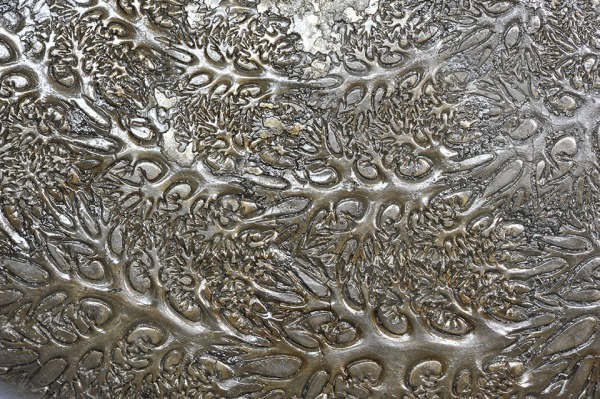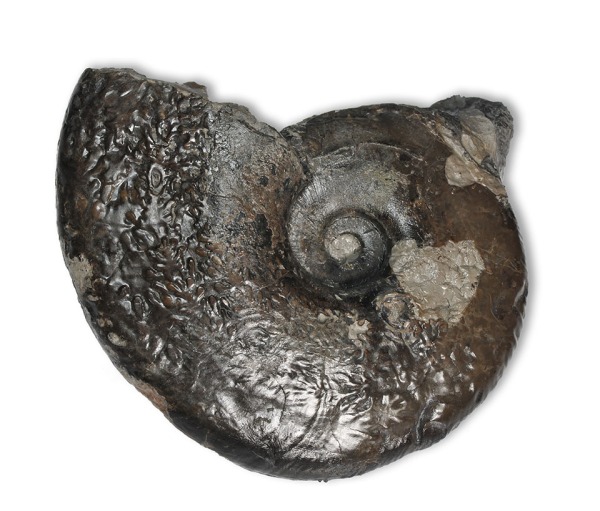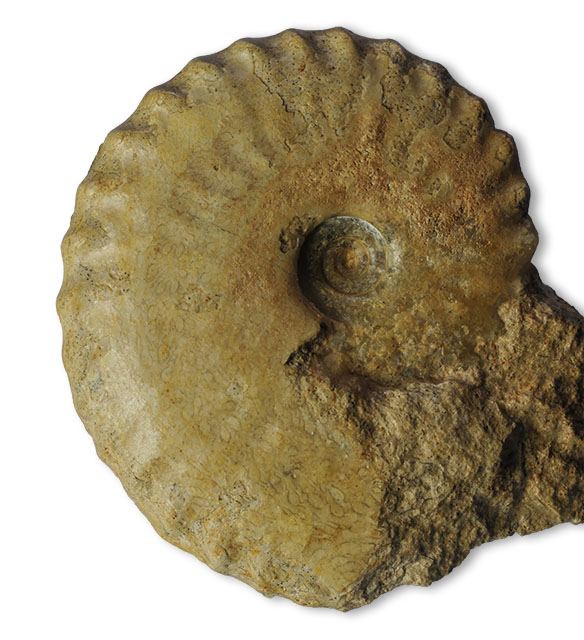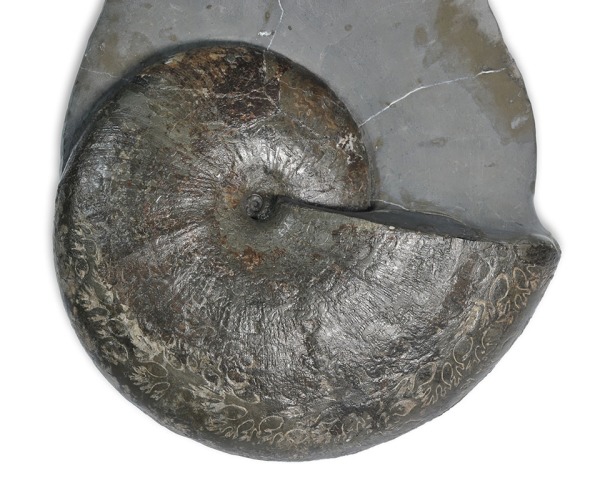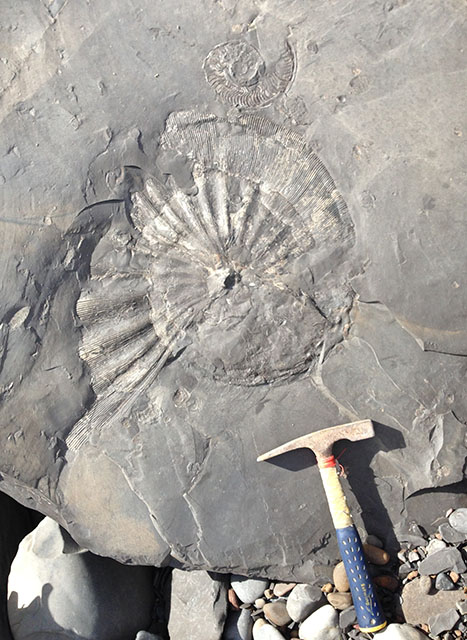The Phyllocerataceae are a superfamily of ammonites that is very much like the Lytocerataceae – they’re thought to have been deep water denizens, often only straggeling into Yorkshire from the Tethys when a passage opened up, they’re quite conservative (there’s not a lot of change and not many species, at least not in Yorkshire), they’re not very common (though probably slightly less rare than Lytoceras) and they’re very beautiful and highly sought after ammonites.
Two families of the Phyllocerataceae are represented in Yorkshire, the Phylloceratidae with the genus Phylloceras in the Toarcian and the Juraphyllitidae with Tragophylloceras in the Pliensbachian and (rare to the extreme) Meneghiniceras in the lower toarcian with the following species :
- Phylloceras heterophyllum (SOWERBY, 1820)
- Tragophylloceras numismale (QUENSTEDT, 1845)
- Tragophyllocas loscombi (SOWERBY, 1817)
- Meneghiniceras lariense (MENEGHINI, 1875)
The index fossil of the ibex zone, Tragophylloceras ibex, has not been found in Yorkshire, neither have been to my knowledge the species Tragophylloceras undulatum and Tragophylloceras carinatum.
For this post I’ve nevertheless decided (apart from the title picture) to include some reference specimen of T. ibex and a coarsely ribbed T. undulatum from my collection from the french Fresney-le Puceux quarry, which I had the opportunity to visit on a guided excursion more than 30 years ago, and a beautiful complete finer ribbed specimen of T. undulatum from the Radstock/Somerset area which by wonderful coincidence came up in the eBay shop of Mark Varah while I was writing this post – of course it was a chance too good to miss…
Tragophylloceras numismale (QUENSTEDT, 1845)
Tragophylloceras numismale can sometimes be found in the polymorphus subzone as small pyritized phragmocones, the body chamber usually either not preserved at all or flattened. The small ammonites show characteristic repeating constrictions on the inner mould which do not persist onto larger whorls.
The larger specimen above was a lucky find from a very fresh small cliff fall maybe 2-3 m above the beds where the pyritized specimen occur. It must literally have fallen only hours before I passed the area about 3 hours after high tide as it had not been touched by the sea.
Tragophylloceras loscombi (SOWERBY, 1817)
In contrast to similar beds in Dorset, where Tragophylloceras loscombi and Androgynoceras often occur together, the Yorkshire T. loscombi specimen only rarely accompany Androgynoceras in the Yorkshire maculatum subzone and are generally very hard to find and most of the time relatively small.
It´s range seems to be rather long, from the luridum subzone up to the stokesi subzone. The ammonite exhibits fine ribbing, and only very fine undulations at the venter.
Tragophylloceras undulatum (SMITH, 1817) (coarsely and finely ribbed variants)
More or less fine ribbing with regular undulations at the venter.
Tragophylloceras ibex (QUENSTEDT, 1843)
Tragophylloceras ibex has the most coarse undulations at the venter.
Phylloceras heterophyllum (SOWERBY, 1820)
A large 3D preserved Phylloceras is most fossil collector’s dream – it still is for me, the largest Phylloceras I’ve found is about 4″ / 10 cm…
Phylloceras is a genus which can get quite large, probably one of the largest genera in the Yorkshire lias, up there together with some of the Schlotheimia and Coroniceras genera from the lower lias.
This flattened specimen pictured below is from the falciferum zone at Ravenscar and is about 80 cm in diameter, it must have been a marvellous sight when alive, leisurely and majestically drifting through the liassic seas…
It also shows the broader waves of seconday ribbing on the body chamber that develops on larger specimen.
It was left in place as it was too large and possibly too fragile to attempt to split off – but I have no doubt that it will not remain there for long,
AndyS
Literature :
M. K. HOWARTH, D.T. DONOVAN :
M.K. HOWARTH:
Both these papers are available online at the Palaeontological Association at http://www.palass.org/beta/publications/palaeontology-backissues/

